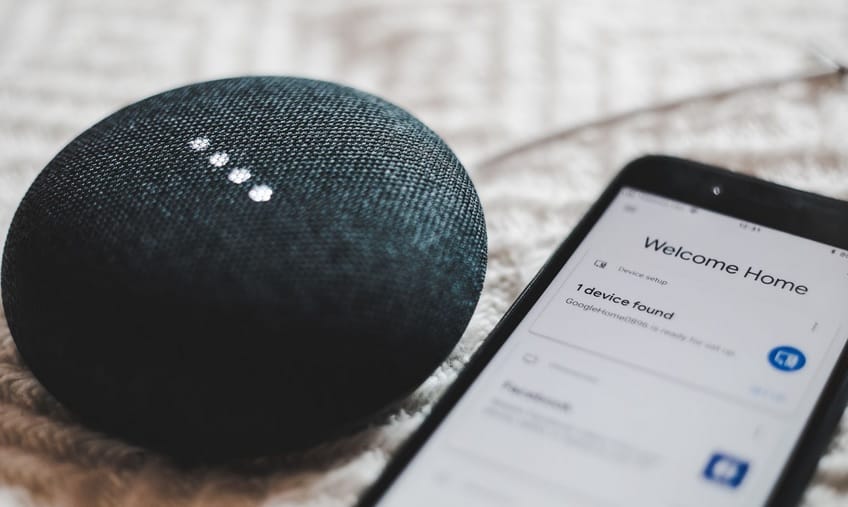The idea of a smart home has been around for decades, but it is only now that the technology and infrastructure are available to make it a reality. With connected appliances, automated systems, and voice-activated controls, homes can be transformed into intelligent living spaces that respond to your needs.
This new wave of automation promises convenience, safety and savings in energy costs – all while making life easier.
So if you have ever dreamed about having your own personal assistant or felt like your house could use an upgrade then let’s delve into the world of smart homes!
The Concept Of A Smart Home And Its Benefits
Smart home technology is providing homeowners with unprecedented convenience, safety and security.
From remotely controlling appliances to having the ability to monitor your home from anywhere, the possibilities are endless.
This kind of solution allows users to automate their daily routine, save energy and money on utilities, and even have peace of mind when it comes to safety and security.
This technology can add significant value to a property, making it easier and quicker to sell or rent because smart home features such as automated lighting, streaming audio/video, thermostat control, security systems, and remote access can all be used to attract buyers who want the convenience of modern amenities in their new homes.
This technology has come a long way in recent years, with more manufacturers offering devices that are designed to work together seamlessly.
Smart thermostats allow users to program their heating and cooling systems to maintain the perfect temperature at all times, while motion sensors can detect intruders and alert you when something is amiss.
Smart lights and locks can be controlled from your phone, allowing you to turn lights on and off or lock the door remotely.
With these features, homeowners can save money by reducing energy consumption, while also making their home safer and more secure.
How Does This Technology Work?
These devices allow you to control them from anywhere using an app on your phone or tablet.
You can also set up rules and schedules so that your home is always running efficiently.
For example, you could have the lights turn on when it gets dark or the temperature in your home adjust automatically based on the time of day.
You can also connect all of these devices together so they communicate with each other to create a more efficient system.
For example, the lights in your living room could automatically turn off when no one is home or the security camera could alert you if there’s any activity around your house.
Home automation systems are now available that allow users to control multiple devices at once such as appliances, lights, locks and more.
How Can New Security Systems Provide Peace Of Mind
Security systems are one of the most important smart home products, helping protect your family and property from intruders or unexpected events.
Modern security systems provide a range of features to keep your home safe, from video surveillance and motion sensors to alarms that can be set remotely.
This means homeowners can monitor their home from anywhere in the world and even receive alerts in case of an emergency.
These systems also provide peace of mind when away on vacation or traveling for business, allowing you to check up on your house or have someone look in on it while away.
They can also be integrated with other smart home devices such as door locks and lights, allowing for more control over your home’s safety.
The future of smart home security promises even more features, including facial recognition and access control.
This means your home can be unlocked without the need for a physical key, and you can be alerted if someone unfamiliar attempts to enter.
How Can Smart Homes Save Energy?
Smart homes are designed to be energy-efficient. This can include things like setting the thermostat at an optimized temperature or using LED lighting which is more energy-efficient than traditional bulbs.
Smart home technology also allows you to control your home remotely, meaning that you can turn off lights and appliances when they aren’t needed, saving electricity and money.
It can also be used to detect energy usage, alerting you when your energy consumption is getting too high and allowing you to adjust accordingly.
This technology can automate certain tasks such as turning off lights when no one is in the room or adjusting the temperature at night for better sleep.
What Are Some Of The Most Popular Smart Home Devices?
Today, some of the most popular smart home devices include:
- Voice assistants – Amazon Alexa, Google Home, and Apple’s Siri
- Connected thermostats – Ecobee and Nest
- Security systems – Ring, Arlo, and SimpliSafe
- Video doorbells – SkyBell and August
- Automated lighting systems – Philips Hue and Lutron
- Automated garage door openers – MyQ and Chamberlain
- Robotic vacuums – iRobot Roomba
- Streaming media players – Apple TV, Roku, and Amazon Fire TV
- Smart home hubs – Wink and SmartThings
- Connected smoke detectors – Nest Protect
Internet of Things (IoT) enabled appliances like refrigerators, washing machines, and dryers.
With these devices and more, you can control everything from temperature to locks to lighting from anywhere in the world. The smart home of the future is here now!
How To Start Creating A Smart Home System?
First and foremost, it’s important to research the available products on the market and determine what type of technology is best suited for your needs.
Once you have a clear picture of your desired outcomes, then you can start looking at specific products that will help you achieve them.
You’ll want to consider things like Wi-Fi, voice controls, compatibility with mobile devices, and security features when making your decisions.
The next step is to identify the areas in your home you would like to be able to control.
Commonly controlled areas include lighting, climate control, security systems and appliances.
Once you have identified these areas of your home, you can start researching compatible products and begin setting up the system in your home.
Once the setup is complete, you’ll want to take some time to familiarize yourself with the different features that come with each device.
This includes learning how to control them with voice commands and mobile apps, as well as understanding any security measures in place.
With a bit of practice and experimentation, you’ll soon be able to make the most out of your smart home system and enjoy all the convenience and comfort it provides.
The Potential Of Future Technologies
Artificial intelligence and robotics are already being used to create more efficient, automated systems that can perform complex tasks such as controlling temperature, lighting, security and entertainment systems.
AI can be used for predictive analysis of energy usage in order to reduce costs by providing optimal settings in different scenarios.
Robotics can also be used for tasks such as cleaning and home maintenance, allowing homeowners to enjoy a more comfortable and efficient living environment.
With the rise of connected devices, future technologies like AI and robotics could create smarter homes that are energy efficient and can even anticipate the needs of their occupants.
AI-enabled automation could provide more convenience and safety for homeowners by automating mundane tasks such as sorting mail or dispatching emergency services.
As these technologies continue to develop, the smart home of the future will become an ever-increasing reality.
By leveraging artificial intelligence and robotics, homeowners can create smarter, more efficient homes that are also energy conscious and tailored to their individual needs.








